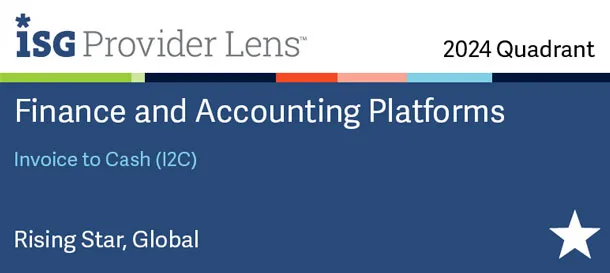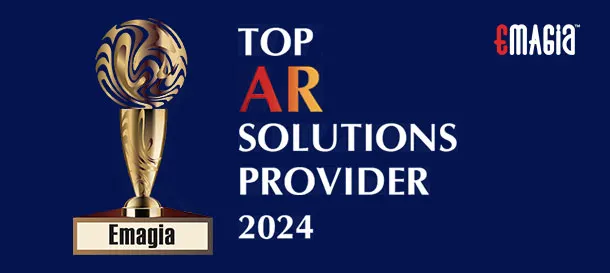Cash forecasting is a principal tool of cash management. Cash forecasting methods can be divided into two categories: short-term cash forecasting and long-term cash forecasting. The most challenging part of cash flow forecasting is accounts receivable (AR) collections, which are the primary source of cash in most businesses. Diligent data gathering can help businesses with an effective short term forecasting solution that presents an accurate picture of all short-term cash requirements and planned outflows.
When the economy is humming and business is good, enterprises focus on growth, strategic direction, and asset return. But they need to keep abreast of their cash standing. Accurate cash flow forecasting is essential to working capital management. Decisions about short-term debt, spending and investment depend on it.
Of course, good times ebb and flow, and occasionally everyone is reminded at once of the critical importance of cash flow. Such was the case when the pandemic interrupted “normal.” Suddenly, organizations needed to know their current cash situations and short-term forecasts of cash receipts to determine whether and how they could meet obligations, including payroll, debt service and supplier payments.
But this same vigilance is necessary for many businesses at various times, whether due to market changes, rapid growth, or other internal or external events. Cash flow is also vital to analysts and investors. So forecasting is essential. But forecasting, especially short term forecasting, is not easy.
Short-term Cash Forecast
Short-term cash forecasts typically cover 30 to 90 days, depending on circumstances, and cover daily or weekly periods. Unlike the GAAP accounting-based cash flow statement, short-term cash forecasts reflect direct income and outflow of cash. The ability of an enterprise to function—to be able to meet its short-term financial obligations—depends on cash flow. Knowing the company’s cash situation, for example, guides its short-term financing decisions.
Accurate, reliable cash flow forecasting impacts working capital. Working capital is the net of short-term assets—such as cash and equivalents, accounts receivable, inventory and prepaid assets—and short-term liabilities—including accounts payable, accrued liabilities and short-term debt. In short, it looks at short-term cash-in and cash-out. There must be enough of the former to at least cover the latter, not to mention what the company needs to meet its plans for the future.
The reality is that a cash flow crisis would threaten the survival of most organizations. So, companies must monitor cash flow to adjust plans as needed.
Forecasting Is Not Easy
Cash flow forecasting is an arduous job, and accuracy is difficult. A company must identify all sources of cash, including cash sales, receivables collections, payments from loans—all incoming money in the period. Then look at all payments due in the period—debt service, payroll, rents, supplier payments, expense payments and other outflows.
The complexity increases with enterprise size, structure, volume, and the number of systems. For trans-national organizations, add regions, currencies, and time zone coordination. Other considerations include seasonal variations and regional economics. The task is considerable.
Forecasting Accounts Receivable Payments
The most challenging part of cash flow forecasting is accounts receivable (AR) collections. Of course, AR collections are the primary source of cash in most businesses. Diligent data gathering will produce a reasonably accurate picture of upcoming obligations and hence, planned outflows. But despite AR on the books, companies cannot know exactly when customers will pay.
Outflows are predictable, particularly payroll and fixed payments. Accounts payable is a bit harder, but it is within the enterprise’s control.
Unlike AP payments, AR collections are beyond the control of company management. Instead, it is up to the customers’ management and accounts payable departments, juggling payments for their cash flow and perhaps timing some payments according to quarter-end or other events. Or they may be poorly organized and perpetually late in paying.
That’s collections, where AR at least provides guidance. Point of sale cash receipts may be the most difficult to forecast. In both cases, a statistical approach provides a forecast based on history. Simple statistical formulas may provide a defensible number based on the prior year’s income with current economics and growth adjustments. But a much better approach is to employ AI-powered analytics.
Today companies like Emagia offer cash flow forecasting that involves sophisticated analytics and intelligent machine learning. Emagia’s AI analysis not only spots trends in historical data but can integrate sales projections and scenarios. As a result, forecasts are more accurate, and the accuracy rate narrows further over time, providing enterprises with a reliable cash forecasting tool. And forecasts are done in a fraction of the time needed for traditional spreadsheet forecasting.
Summary
Cash forecasting is challenging, and the most significant single challenge is forecasting cash receipts. The most accurate forecasts develop from a detailed, bottom-up, statistical approach. The analysis must include all relevant elements and account for multiple variables.
Faster and more accurate cash forecasts are available in a wholly digital environment that applies advanced analytics and machine learning to a comprehensive data set. Increasingly precise forecasts are possible in modern digital O2C platforms such as that provided by Emagia in a fraction of the time possible in manual forecast development.
For more information, including actual case studies, or a demonstration, contact Emagia.






